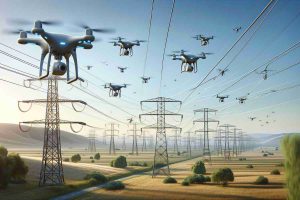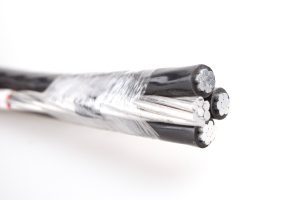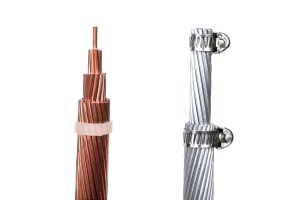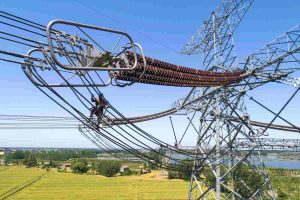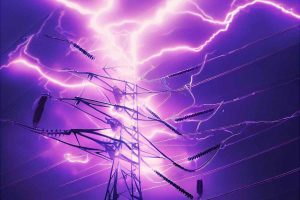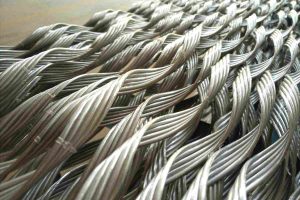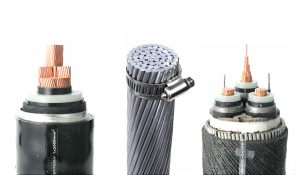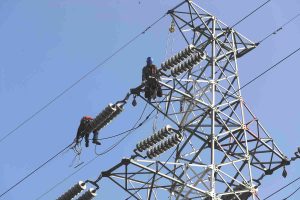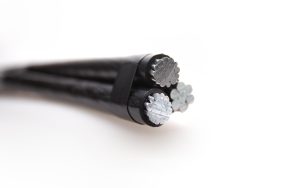The ZMS Cable company has successfully completed its collaboration with the Iraqi Ministry of Electricity (MoE) in the 132KV transmission line project, connecting Dibes with EAST Kirkuk. ZMS suministra high voltage overhead cables essentials and related accessories crucial for project execution.
Electric Air Cable

The overhead electric cable is a form of transportation and distribution of electrical energy., telecommunications and other forms of long-distance information transmission. It is used to carry electricity from one place to another, crossing different types of terrain and obstacles.
On our page specialized in aerial cables, You will find detailed information about the different types of overhead conductors, His construction, design and operation. We also cover important aspects such as the installation and maintenance of these cables, as well as the latest news and advances in overhead cable technology.
If you are interested in learning more about electrical overhead cable and its importance in energy and communications infrastructure, We invite you to visit our website. Here you will find all the information you need to understand and make the most of this fundamental technology..
Drones for Inspection of Power Lines: Autonomy and Precision
With the continued acceleration of the construction of new electrical systems, The use of drones for inspection of power lines has begun to take center stage in the market. Commercial drones seem to have found new application perspectives in this broad market.
What Are Drop Cables? Everything you need to know
In the world of electrical installation, Drop cables play a crucial role, forming the bridge between the electrical power distribution network and the internal system of a building or property. these wires, known in English as SE cables (service entrance cables), They are essential to guarantee a safe and efficient connection to the electrical grid. in this guide, We will explore the key aspects of service conductors, including its types, Applications, and essential technical information.
What are the Differences between AAAC Cables and Copper Cables??
In the power distribution system, Power cables are the main material used to transport electricity. Currently, The most common electrical cables are those with a copper core and those made of aluminum alloy. Does 40 years, cable industry developed AA8000 series aluminum alloy as conductive material. Currently, more than 90% of municipal projects, civilians, Industrial and commercial in the United States use AAAC cables (aluminum alloy conductors).
Aerial Aluminum Conductor Market up to 2032
The market for aerial aluminum conductors is an essential component of the electric power transmission and distribution industry.. It is made up of products such as insulated conductors, bare overhead conductors and accessories used in the construction and maintenance of overhead transmission lines. In recent years, this market has experienced steady growth and is expected to maintain a compound annual growth rate (CAGR) of 4% during the forecast period from 2022 until 2032. It is expected to reach USD 1259.4 million in that period.
Does Radiation from High Voltage Cables Affect Human Health??
In the age of electricity, high voltage cables are an essential part of our modern infrastructure. These cables carry large amounts of electrical energy over long distances., feeding our houses, industries and cities. Nevertheless, there has been persistent concern about whether radiation from these high voltage cables can affect human health. To fully understand this topic, First we must distinguish between two types of radiation: the ionizing and the electromagnetic.
Preformed Truss Rods: Protection and Versatility in Electrical Installations
In the world of electrical installations, Cable protection is vitally important to ensure safe and efficient operation. Preformed rebars are an innovative solution that has gained popularity for its ability to protect cables from a variety of external threats., like vibrations, tightening efforts, abrasion and arcing.
Types and Characteristics of High Voltage Conductors
High-voltage conductors play a critical role in the efficient and safe transmission of electrical power over long distances.. These special cables are designed to withstand high voltages and carry large amounts of electricity., allowing energy to be brought from the generating plants to the places where it is needed.
Why High Voltage Cables Don't Have an Insulation Layer?
In daily life, all the cables we use are covered with insulation to prevent electric shock. But, Why do high voltage cables use bare conductors without insulation?? In fact, this is due to the voltage level and the characteristics of the cable.
What is self-supporting cable and what are its advantages??
What is self-supporting cable?
The self-supporting cable is a type of electrical cable used for urban and rural aerial distribution networks.. It is made up of a set of pure aluminum conductors, each insulated with XLPE and assembled around a support element.


